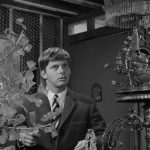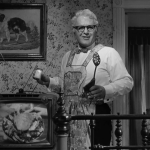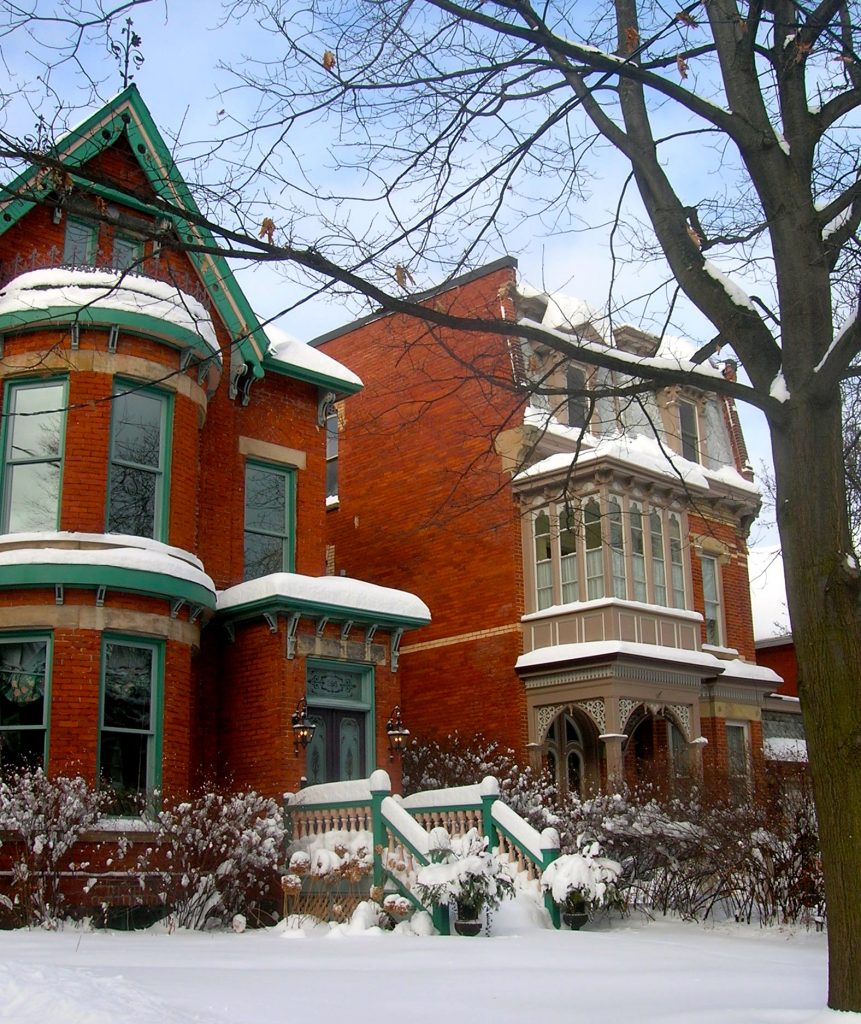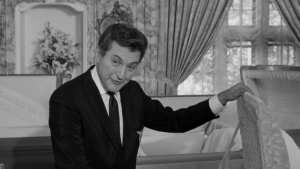Image of the Month
FILMS — APRIL 2019
(Trelfer 2016) Dark Corners Review: (100) Fiend Without a Face
(di Chiera 2009) Death of the Megabeasts
(Friedkin 1970) The Boys in the Band
(Friedman 1989) Phantom of the Mall: Eric’s Revenge
(Trelfer 2019) Dark Corners Review: (349) Phantom of the Mall: Eric’s Revenge
(Sasdy 1985) The Secret Diary of Adrian Mole: Ep.1
(Winther 2004) The Librarian: Quest for the Spear
(Schumacher 1994) The Client
(Miike 2001) The Happiness of the Katakuris [カタクリ家の幸福 ; Katakuri-ke no Kōfuku]
(Trelfer 2019) Dark Corners Review: (350) The Horror Films of F. W. Murnau
(Oliver 2008) On the Other Hand, Death
(1928) Early Sound Footage: United States
Read more »
First-time listening for April 2019
25565. (Dude Martin & His Roundup Gang) Atom Bomb Baby / Wishy Washy Woman [single]
25566. (Ólafur Arnalds) Eulogy for Evolution
25567. (Bob Mould) Sunshine Rock
25568. (Jan Pieterszoon Sweelinck) Psalm 116 for Organ
25569. (Jan Pieterszoon Sweelinck) Psalm 140 for Organ
Read more »
READING — APRIL 2019
24126. (Oliver Dietrich, et al) Göbekli Tepe ― Preliminary Report on the 2012 and 2013
. . . . . Excavation Seasons [article]
24127. (Jean Manco) Ancestral Journeys ― The Peopling of Europe from the First
. . . . . Venturers to the Vikings
24128. (Barbara Perry, David C. Hofmann & Ryan Scrivens) TSAS Canadian Network for
. . . . . Research on Terrorism, Security and Society: Broadening our Understanding
. . . . . of Anti-Authority Movements in Canada [report]
24129. (John F. Helliwell, Richard Layard & Jeffrey Sachs) World Happiness Report 2019
Read more »
Image of the Month
FILMS — MARCH 2019
(Joffe 2017) Tin Star: Ep.1 ― Fun and (S)Laughter
(Rye 2011) MidSomer Murders: Ep.91 ― Murder of Innocence
(Silberston 1998) MidSomer Murders: Ep.3 — Death of a Hollow Man
(Rye 2012) MidSomer Murders: Ep.92 ― Written in the Stars
(Taylor 1998) MidSomer Murders: Ep.4 — Faithful Unto Death
(McNaughton 1974) Monty Python’s Flying Circus: Ep.41 ― Michael Ellis
(Moore 1976) Murder By Death
Read more »
First-time listening for March 2019
25545. Hassaniya Music From The Western Sahara And Mauritania
25546. (Yip Yip Coyote) Fifi
25547. (Mount Eerie) A Crow Looked At Me
25548. (Maggie Rogers) Heard It in a Past Life
Read more »
READING — MARCH 2019
24112. (Michael Breen) The New Koreans
24113. (Konstantinos Kopanias & Sherry C. Fox) Headshaping and Identity at Tell Nader
. . . . . [article]
24114. (M. Ginolfi, et al) Where Does Galactic Dust Come From? [article]
24115. (Hergé) Tintin au Congo
24116. (John T. Koch) Hα C1α ≠ PC [The Earliest Hallstatt Iron Age Cannot Equal Proto-
. . . . . Celtic] [article]
Read more »
(Richardson 1965) The Loved One

 This is the kind of film that should be seen by happenstance. A deliberate viewing can’t match the delicious pleasure of stumbling upon it by chance. I really shouldn’t even be telling you about it.
This is the kind of film that should be seen by happenstance. A deliberate viewing can’t match the delicious pleasure of stumbling upon it by chance. I really shouldn’t even be telling you about it.
In 1947, the British novelist Evelyn Waugh was approached by Hollywood for a possible filming of his novel Brideshead Revisited. The book’s two essential components were a heavy dose of the mystical upper-class Catholisism which exists only in England and bears no resemblance to Catholicism anywhere else, and a steamy homosexual yearning that manages to never mention homosexuality. The idea that this would have been made into a film even vaguely resembling the original was ludicrous, but Waugh was happy to let Hollywood give him an all-expense-paid trip to Los Angeles to haggle. Waugh had no intention of going through with the deal. Waugh was a snob — he was revolted that “lower-class” service people spoke to him as an equal, detested American informality, and complained about everything. But snobs often write the best satire (think Thackeray), as they have no compunctions about hurting people’s feelings. Hollywood is a bizarre, artificial, and goofy place even for Americans, and Waugh found plenty of material for his next satirical novel, The Loved One, which appeared in 1948. He was particularly fascinated by Americans’ peculiar attitudes towards death and (to a Brit) weird funeral customs. The plot is simple: A young Englishman with a posh education but no particular ambition wins a trip to Hollywood, and stays with an Uncle who is a stalwart in the expat British community in the film studios. His host commits suicide, leaving him to fend for himself on this alien planet. Attending to his uncle’s funeral, he becomes involved with Aimée Thanatogenos, an embalmer working at Whispering Glades Cemetery, a spectacularly vulgar Disneyland of Death created by the megalomaniac Blessed Reverend Glenworthy. He encounters an assortment of lunatics, all of them displaying extreme versions of American culture that Waugh found offensive and laughable. As in many of Waugh’s books, and many of the same ilk, the “hero” displays no noticeable virtues other than not being one of the loonies.
Tony Richardson, a British director who had scored big with critically acclaimed and financially successful films (Look Back in Anger; The Entertainer; A Taste of Honey; The Loneliness of the Long Distance Runner; Tom Jones) filmed the book in 1965. The script was written by the wildly unlikely combination of Terry Southern and Christopher Isherwood. Southern is not much read now, but in 1965 he was in literary vogue, and usually paired with Kurt Vonnegut as a satirist. Isherwood was a gay playwright and novelist who had chronicled the sexual underground of Weimar Germany, and would later reach a wide audience with Cabaret. Waugh had viciously caricatured Isherwood in one of his novels, but in that catty literary crowd such things apparently did not matter much. The film script sticks fairly close to the book, but adds a some scenes that make it fit in better with 1965. These additions would, I suspect, have been fine with Waugh. Visually, the film is a feast. Every shot fills the eye with details just as funny as the situations and the dialog. Every cut serves a satiric purpose. But the real bonanza is the casting. Aimée Thanatogenos is played to perfection by Anjanette Cormer, whose remarkable talent was never well-used by Hollywood. The English hero is played by Robert Morse, one of the few American actors at the time who could convincingly play an Englishman — while the vulgar American film mogul is played by Roddy MacDowall, then still best known as a former English child star. Liberace turns in a hilarious performance as a funeral director — he really missed a chance to be a great comic film actor. Jonathan Winters plays both the Reverend Glenworthy and his incompetent twin brother, making each character a gem. Rod Steiger chews the scenery with the mother-obsessed and nearly psychotic Mr. Joyboy. Paul Williams is a child rocket scientist. The actual Hollywood English Contingent (regularly cast as “Lords and butlers”) essentially play themselves: John Gielgud, Robert Morley, Alan Napier. Milton Berle, James Coburn, Margaret Leighton, Barbara Nichols, Lionel Stander, and Bernie Kopell do well-crafted bits. There are numerous Hollywood in-jokes that the audience could hardly have been expected to catch. For example, the cowboy film star who is being absurdly voice-coached by the studio to play an English Lord is played by Robert Easton. Easton was himself a voice coach, and one of the worlds greatest authorities on English dialects. Many in the cast were closeted gays. Tab Hunter plays a tour guide!
It’s extraordinary that this satirical film, made 54 years ago, based on a book written 71 years ago, remains relevant and bitingly funny.



